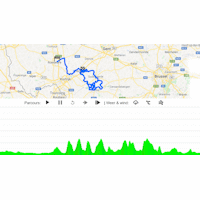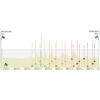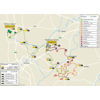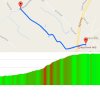Although the race features its familiar mix of cobbles and hills, the route is different from previous years. The climbs on the Zeelstraat and Stooktestraat are new altogether, while Ladeuze will be ascended instead of descended. The first two appear early on and the latter is crested inside the last 40 kilometres, so the Ladeuze could have an impact on how the race unfolds.
The start is where it has always been since the race’s inception – in Roeselare – and the first ‘helling’ appears after roughly 60 kilometres. Dwars door Vlaanderen follows the routine that’s so characteristic for most Flemish classics. Every ten kilometres or so a another climb adds to the fatigue. Before kilometre 100 the riders have tackled the Nieuwe Kwaremont, Zeelstraat, Côte de Trieu, Stooktestraat, Hotond, and Kortekeer.
Moreover, the hills are complemented by unevenly paved roads, although the pavé is not as prominent as in the Tour of Flanders. After the Kortekeer climb the riders tackle the cobbles of the Mariaborrestraat for the first time and via Berg Ten Houte and Kanarieberg they reach the Côte de Trieu/Hotond combination again. Shortly, the Mariaborrestraat reappears, only to continue almost without transition onto the Ladeuze climb. As said, less than 40 kilometres to go after the summit.
With 20 kilometres remaining the riders face two more climbs. First the Nokereberg (500 metres at 5.7%, cobbled), then 800 metres of pavé on the Herlegemstraat, and lastly Holstraat (400 metres at 5.7%). There are 8.3 kilometres remaining after the last hill.
Ride the route yourself? Download GPX Dwars door Vlaanderen.
Other interesting reads: results and start list 2022 Dwars door Vlaanderen.
Dwars door Vlaanderen 2022: routes, profiles, more
Click on the images to zoom









